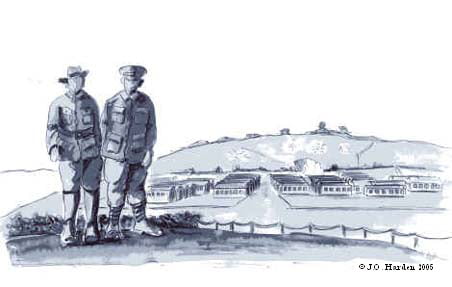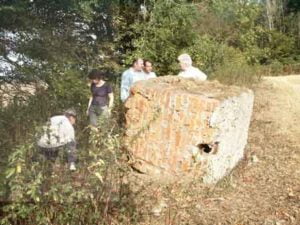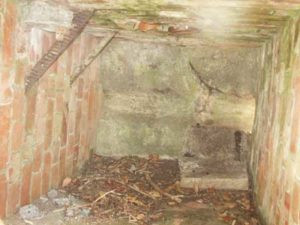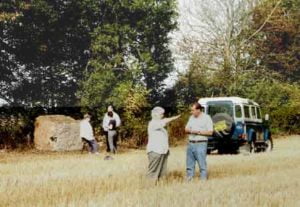
‘All that glisters’ …
may not turn out to be gold. Nor, when you are digging up old history, may it come up smelling of roses, but everything will prove extremely interesting.
Last Spring I was being driven around the fields in Fovant where, in 1914–19 vast military camps had been built. I was particularly investigating the Army Hospital that had been here, but I was not allowed on Hospital Field because of the newly sown crop. In the farthest corner a concrete and brick structure was pointed out to me. ‘It kept breaking the plough shares,’ I was told ‘but when we tried to break it up with sledge hammers we couldn’t. So we dug it out and rolled it to the side of the field out of the way. It’s been there ever since. When the harvest is done I’ll take you in to see it’.
Never has a growing crop been watched so eagerly. I took binoculars and gazed at the mystery object. Finally, the seasons did roll round and the harvest happened. At last I could get to see ‘it’! Photos, measurements, speculation, advice from all sorts of experts including Wessex Archaeology.
So, what if it did turn out to be an example of an early 20th century drain inspection chamber! It is a
prime example of a drain inspection chamber.
The fact that all the camps would have had several and there were dozens of camps in Fovant in the Great War and there must be ever so many still buried under the fields not interfering with the ploughshares is immaterial. This one is on top of the ground to be seen by all, and it is in OUR Hospital Field.
I do love historical research whatever the outcome!
M.A.M
Dec. 2003
Content last updated
3 January 2004

